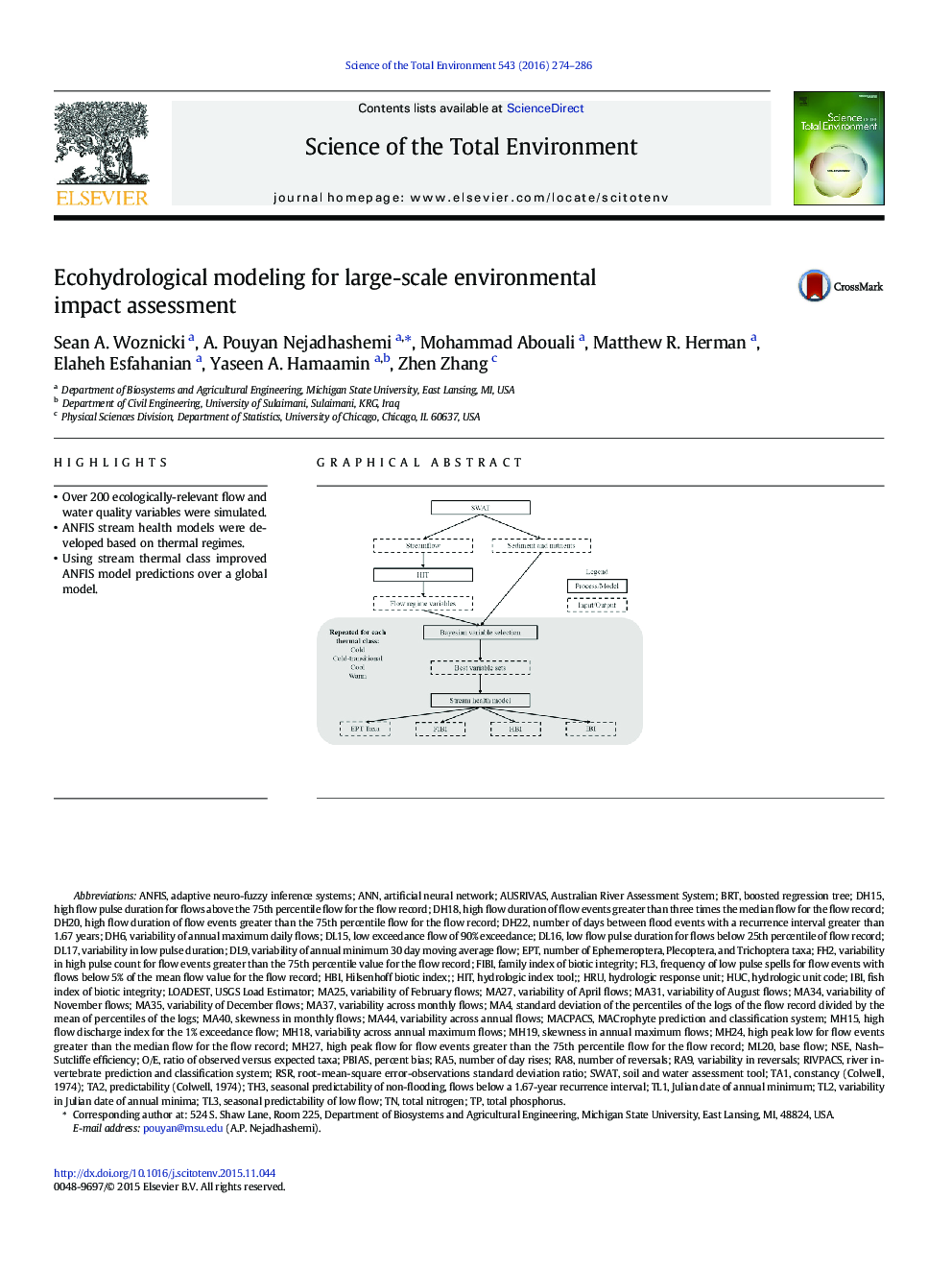| کد مقاله | کد نشریه | سال انتشار | مقاله انگلیسی | نسخه تمام متن |
|---|---|---|---|---|
| 6324360 | 1619740 | 2016 | 13 صفحه PDF | دانلود رایگان |

• Over 200 ecologically-relevant flow and water quality variables were simulated.
• ANFIS stream health models were developed based on thermal regimes.
• Using stream thermal class improved ANFIS model predictions over a global model.
Ecohydrological models are frequently used to assess the biological integrity of unsampled streams. These models vary in complexity and scale, and their utility depends on their final application. Tradeoffs are usually made in model scale, where large-scale models are useful for determining broad impacts of human activities on biological conditions, and regional-scale (e.g. watershed or ecoregion) models provide stakeholders greater detail at the individual stream reach level. Given these tradeoffs, the objective of this study was to develop large-scale stream health models with reach level accuracy similar to regional-scale models thereby allowing for impacts assessments and improved decision-making capabilities. To accomplish this, four measures of biological integrity (Ephemeroptera, Plecoptera, and Trichoptera taxa (EPT), Family Index of Biotic Integrity (FIBI), Hilsenhoff Biotic Index (HBI), and fish Index of Biotic Integrity (IBI)) were modeled based on four thermal classes (cold, cold-transitional, cool, and warm) of streams that broadly dictate the distribution of aquatic biota in Michigan. The Soil and Water Assessment Tool (SWAT) was used to simulate streamflow and water quality in seven watersheds and the Hydrologic Index Tool was used to calculate 171 ecologically relevant flow regime variables. Unique variables were selected for each thermal class using a Bayesian variable selection method. The variables were then used in development of adaptive neuro-fuzzy inference systems (ANFIS) models of EPT, FIBI, HBI, and IBI. ANFIS model accuracy improved when accounting for stream thermal class rather than developing a global model.
Figure optionsDownload high-quality image (108 K)Download as PowerPoint slide
Journal: Science of The Total Environment - Volume 543, Part A, 1 February 2016, Pages 274–286